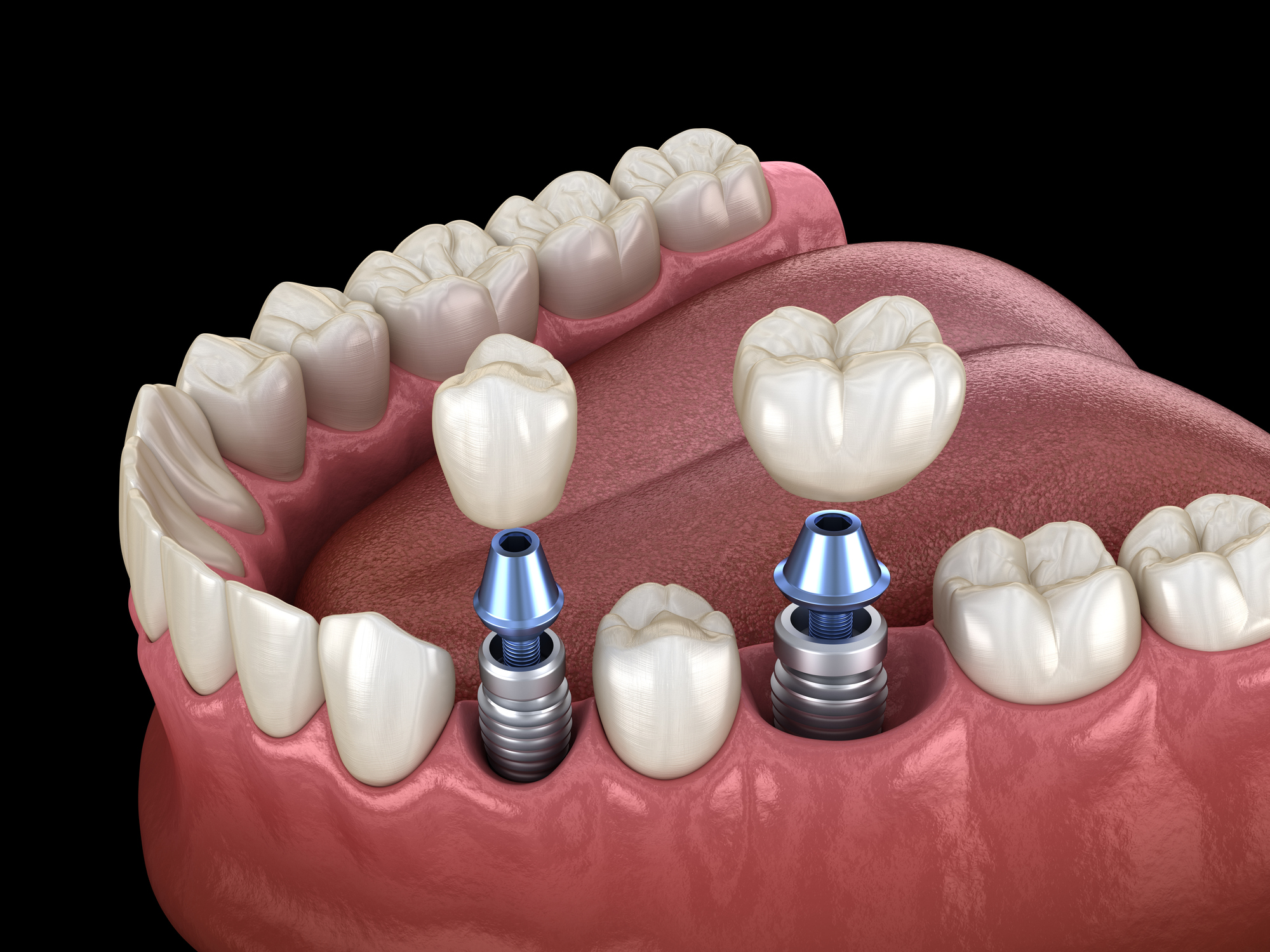Some Known Details About Dental Sense
Dental Sense Fundamentals Explained
Table of ContentsAll About Dental SenseDental Sense - QuestionsA Biased View of Dental SenseThe Buzz on Dental Sense
are medical gadgets surgically dental implanted into the jaw to recover a person's capability to chew or their appearance. They provide support for man-made (fake) teeth, such as crowns, bridges, or dentures. When a tooth is lost because of injury or disease, a person can experience difficulties such as rapid bone loss, faulty speech, or adjustments to eating patterns that lead to discomfort.Oral implant systems include a dental implant body and dental implant joint and may additionally include a joint fixation screw. Front tooth filling. The oral implant body is surgically placed in the jawbone instead of the tooth's root. The oral implant joint is generally affixed to the implant body by the abutment fixation screw and prolongs with gum tissues right into the mouth to sustain the affixed synthetic teeth
(https://yoomark.com/content/dental-implants-including-endosteal-subperiosteal-and-mini-types-offer-both-stability-and)Framework of The Dental Implant System selecting oral implants, speak to your oral supplier about the potential advantages and dangers, and whether you are a candidate for the treatment. Points to think about: Your general health is an essential consider determining whether you are a great candidate for oral implants, the length of time it will require to recover, and how much time the dental implant may remain in place.
Smoking cigarettes may influence the recovery process and decrease the long-term success of the dental implant. The healing procedure for the implant body might take numerous months or longer, during which time you generally have a momentary abutment instead of the tooth. the oral implant procedure: Carefully follow the dental hygiene directions provided to you by your dental service provider.
Dental Sense Fundamentals Explained
Implant failure can result in the need for an additional procedure to deal with or change the implant system. Brings back the capability to chew Brings back aesthetic appearance Aids keep the jawbone from shrinking because of bone loss Protects the health and wellness of the bordering bone and gums Aids maintain surrounding (nearby) teeth stable Improves lifestyle Damage to bordering natural teeth during implant positioning Injury to the surrounding cells throughout surgical procedure, such as sinus perforation Injury during surgical treatment (for example, fracture of bordering jawbone) Insufficient function, such as feeling like the teeth do not attack with each other normally A feeling that the tooth hangs or turning in position resulting from a joint screw loosening up Implant body failing (looseness of the dental implant body) due to systemic infection, which may be extra most likely in people with unchecked diabetics issues due to local infection in bone and periodontals supporting the implant body as a result of delayed healing, which may be most likely in people that smoke Difficulty cleaning up the gum tissues around the dental implant, causing bad oral hygiene Unattended gum condition Post-surgical pins and needles as a result of nerve impingement or damages Always notify health care providers and imaging professionals that you have oral implants prior to any kind of magnetic vibration imaging (MRI) or x-ray procedures.
FDA is not familiar with any kind of negative occasions reported for MRI or x-ray procedures with dental implants. Oral implants systems are usually made of products that comply with global agreement requirements of the International Organization for Standardization (ISO) or ASTM International. These standards have information of what makes a safe product.

A dental implant is a structure that changes a missing tooth. With screw-like gadgets, the specialist inserts a dental implant right into the jawbone, and it functions as an anchor for a man-made tooth, called a crown. A device called a joint connects the synthetic tooth to the oral implant. The crown is customized to fit the individual's mouth and match the color of their teeth.
Unknown Facts About Dental Sense
Some people are not eligible for oral implant surgical procedure. It is for dental specialists to run on individuals with: acute illnessuncontrollable metabolic diseasebone or soft tissue disease or infectionIf these issues are fixed, an individual can have the surgical treatment. In, oral doctors avoid from operating people with: If individuals with any one of the above undertake dental implant surgical procedure, there is a greater threat of the dental implant stopping working.

Dental implant surgery is a customized process. Provide you time to recover. Affix the blog post and last crown, bridge or denture.
Next, your surgeon will carefully position the oral news implant right into your jaw. Lastly, your surgeon will rearrange your periodontals and shut the incision with stitches. If your implant is near the front of your mouth, your dentist will make a short-term tooth for you to put on up until you heal. By doing this, you won't have a gap in your smile while you recover.
How Dental Sense can Save You Time, Stress, and Money.
Your service provider can tell you what to expect in your situation. Throughout the healing stage, your jawbone ought to fuse to the dental implant. This procedure, called osseointegration, is important for stability and lasting success. This procedure can take anywhere from 3 to nine months. In many cases, it might take much longer.
When your dental implant heals, your dental practitioner can affix the abutment (little connector article) and your last remediation (crown, bridge or denture). This typically takes concerning one hour to finish and may call for a 2nd minor surgical treatment. You should not feel any type of discomfort during your dental implant procedure since your service provider will certainly utilize drug to numb your gums.